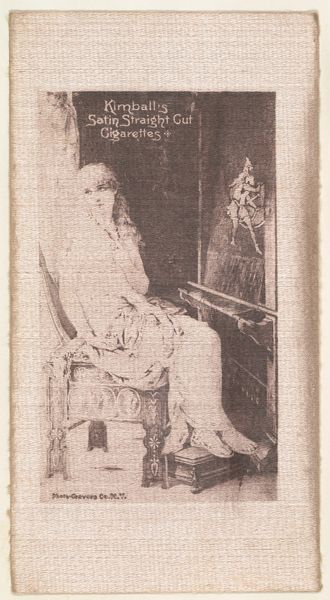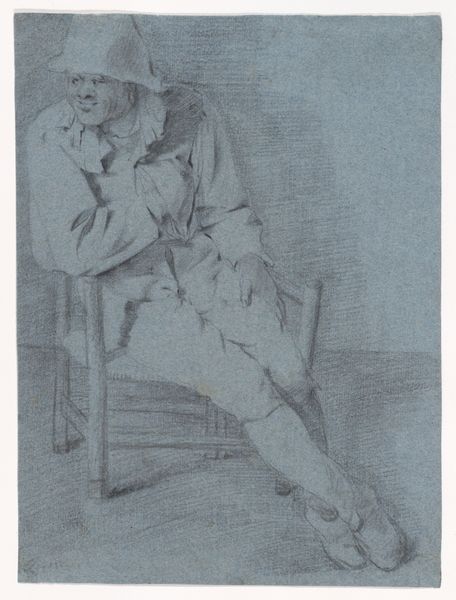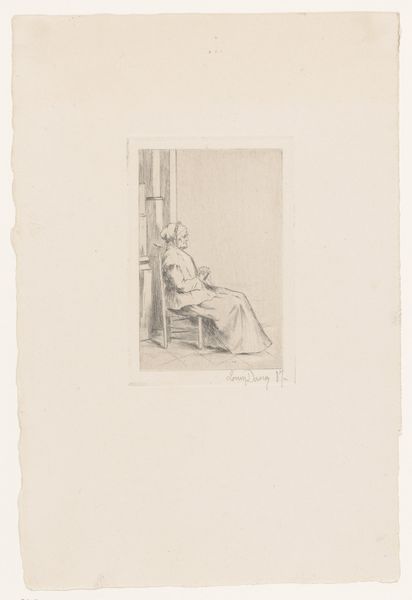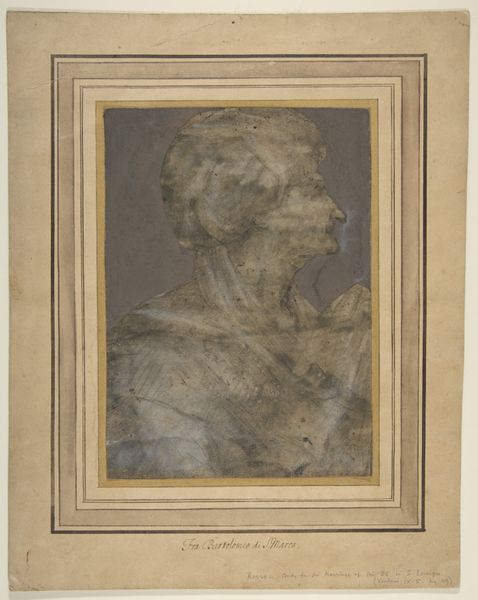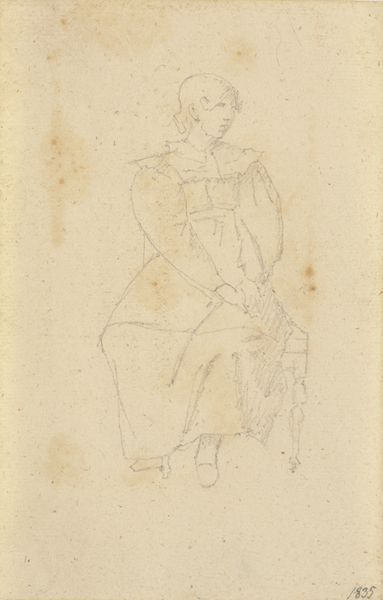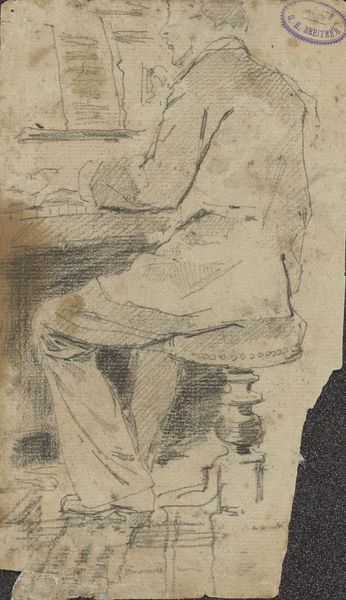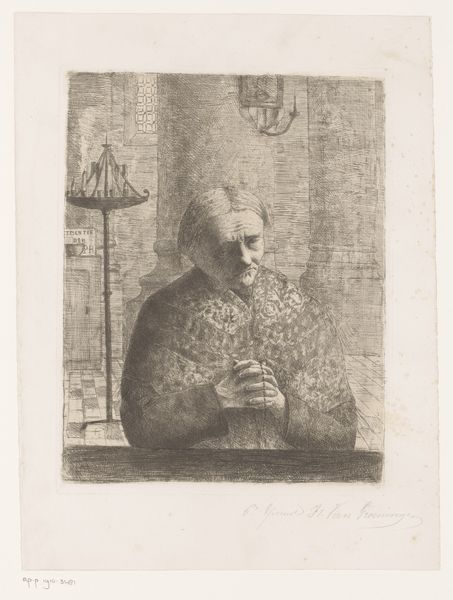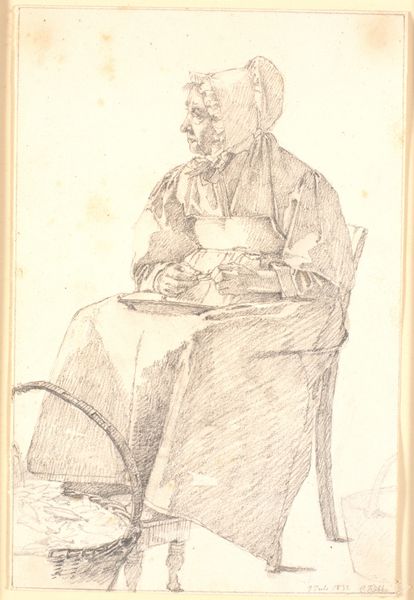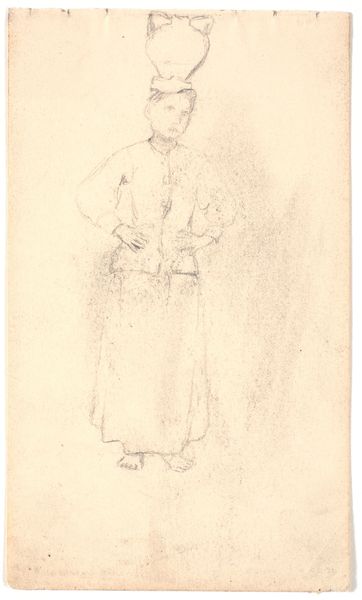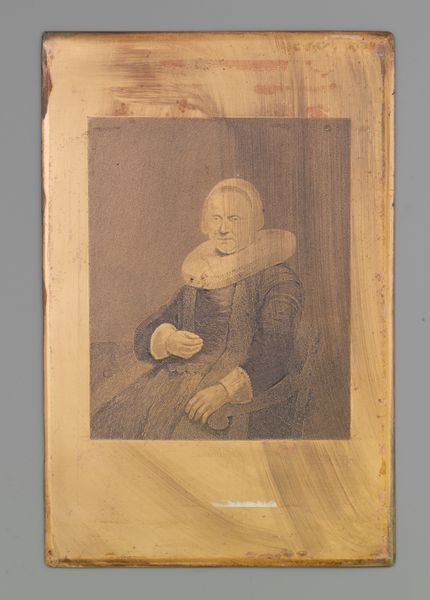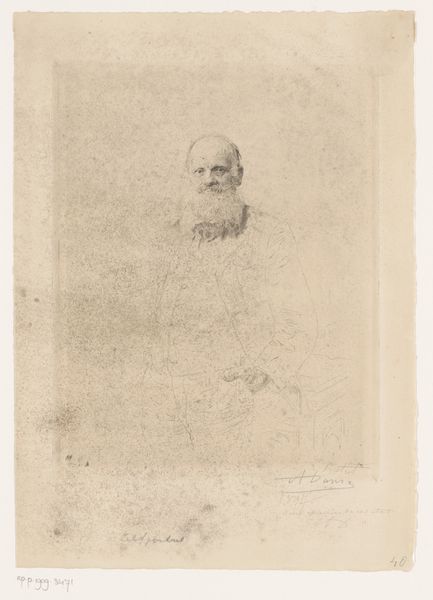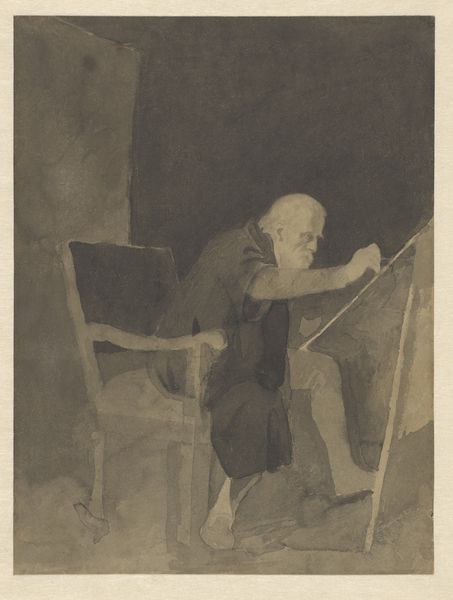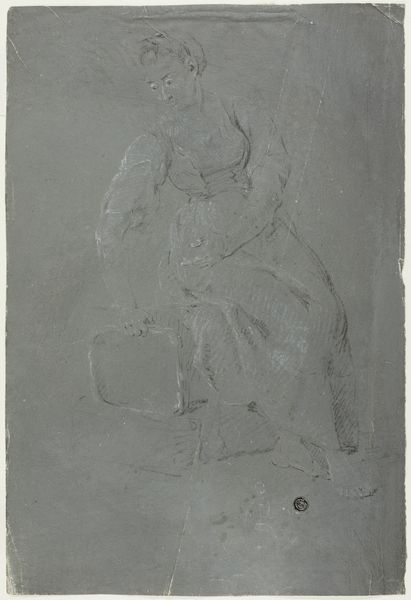
drawing, paper, pencil
#
portrait
#
pencil drawn
#
drawing
#
self-portrait
#
paper
#
pencil
#
expressionism
Dimensions: height 363 mm, width 294 mm
Copyright: Rijks Museum: Open Domain
Editor: This is Samuel Jessurun de Mesquita's "Self-Portrait at the Easel," created in 1921 using pencil on paper. The first thing that strikes me is how unfinished it looks, almost like a ghost. What do you see in this piece? Curator: That feeling of incompletion is key, I think. Let's consider the socio-political landscape of 1921. World War I had just ended, leaving profound scars. Many artists turned inward, grappling with trauma and uncertainty. De Mesquita, as a Jewish artist in a time of rising antisemitism, might have felt particularly vulnerable. Does this portrait, with its ethereal quality and hesitant lines, reflect that precariousness? Editor: It definitely adds a layer of understanding. I hadn’t really considered the historical context. Is that why the lines are so… fragile? Curator: Perhaps. Or, consider the gaze – averted, introspective. Is he confronting himself, or questioning his place in a society that was increasingly hostile? The Expressionist style lends itself well to conveying inner turmoil, wouldn't you agree? The pencil, a humble tool, becomes a powerful vehicle for expressing anxiety. What do you make of the composition? Editor: I notice how he positions himself *behind* the easel, almost like he's hiding. Is the act of creating itself a shield? Curator: Precisely! Art as refuge, as a space of resistance. It invites us to ponder on who gets to be seen, who is forced into the shadows, and what tools do we have to re-present or reinvent ourselves. So how does thinking of the social climate, change your feeling of the work? Editor: It's much heavier now, a quiet scream hidden in delicate lines. Thank you, I appreciate your perspective! Curator: My pleasure, it’s important to connect art with wider society issues.
Comments
No comments
Be the first to comment and join the conversation on the ultimate creative platform.
